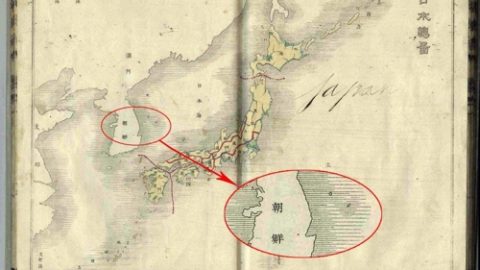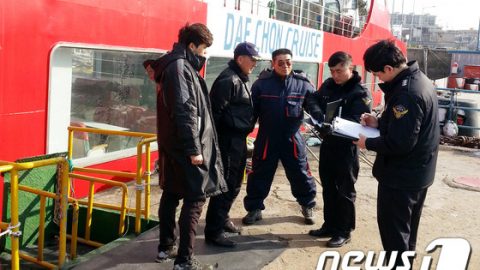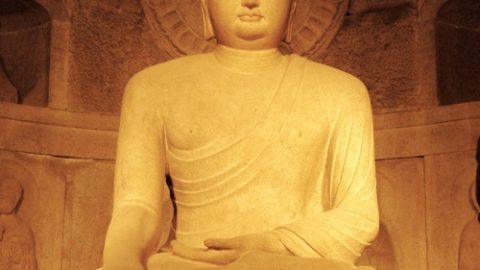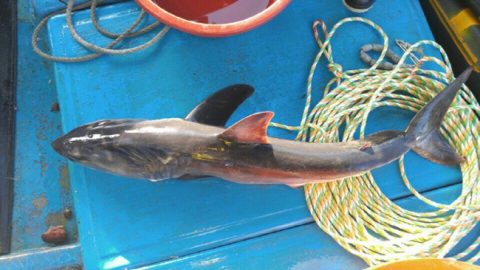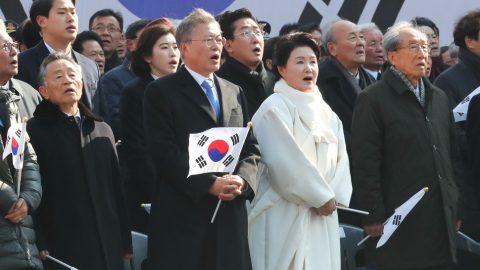Geographical Nature of “East Sea”
The East Sea is a marginal sea of the Pacific Ocean and is surrounded by the northeast part of Asian Continent, the Korean peninsula, the Littoral Province of Russia, the Sakhalin island, and the Japanese islands. It has an area of 1,007,300 approximately and has the maximum south-to-north and east-to-west distances of 1,700 and 1,100 respectively.
The East Sea is an ocean basin formed by a depression of land from a huge block faulting. It is connected to the Pacific Ocean through the Tugaru Strait, to the East China Sea through the Korea Strait, and to the Okhotsk Sea through the La Perouse Strait.
The area of continental shelf is about 210,000, which is approximately one fifth of the whole area of East Sea. The area of deep sea exceeding 3,000m in depth is approximately 300,000, and deepest place is located near the Ogusiri Island, which is located on the northeast part of East Sea and has a depth of 3,762m. The average depth of East Sea is 1,684m. On the whole, the northern and western parts are deeper than the southern and eastern parts, respectively.
“East Sea” in Korea History
The first record of the name East Sea can be traced back to a description of King Dongmyeong of the Goguryeo Kingdom in “The History of the Three Kingdoms.” The period corresponds to 37 B.C.
The name East Sea also appears on the epigraph of a monument in Jian, on the north side of mid-Amonkgang, northeast of China. King Jansu erected this memorial to his late father, King Gwanggaeto, in A.D. 414.
The appellation Sea of Japan first appeared in 1602 in a map dubbed “Mappamondo (Complete Map of the World)” by Matteo Ricci, an Italian Catholic missionary based in Beijing. Therefore, the name Sea of Japan was first used about 1,600 years after the Korean began calling the sea area, the East Sea.
Korea’s old maps, most of them produced after the 16th century, carry the name East Sea. For example, the name East Sea is clearly indicated on “Paldo Chongdo (Map of Eight Provinces of Korea)”in “Sinjeung Dongguk Yeoji-seungnam (Newly Expanded Survey of the Geography of Korea)” published in 1531.
The world academic community consistently maintains that ‘history and representation’ should serve as the standards for geographical names. Following this principle, the sea are lying between Korea and Japan should be called the East Sea, which has represented the sea area for over two millennia, while the name Sea of Japan is barely 200 years old.
The Name “East Sea” in Japan
The sea between Korea and Japan was referred to as the Sea of Joseon (Korea) even in Japan from the 17th century to the later part of the 19th century. According to the “The Study on Sea of Japan” published in 1975 by a Japanese scholar, Kasuno, it was not until 1815 that Westerners started to make reference to the Sea of Japan. The sea was called in Japan by various names, including West Sea of Japan, Tartar Sea, or Sea of Joseon (Korea), until the 19th century.
There is indisputable evidence that many Japanese maps published during the 19th century made references to the sea as the Sea of Joseon (Korea). The maps defining the sea as the Sea of Joseon (Korea) include “Map of Asia” drawn by Katsuragawa in 1794, “The Map” by Takahashi in 1809, “World Map (Chikyu Bankoku Hozu)” in 1853, and “New World Map” by Kisaku in 1897. In addition to these old maps, “Collection of Korean Treaties,” which contains diplomatic documents concluded between Korea and Japan in 1883, also describes the sea as the Sea of Joseon (Korea).
Recover The Name “East Sea”
Korean efforts to restore the historically proper name East Sea have recently begun to bear fruit. The world’s prominent mapmakers are paying attention to the facts and evidence. For example, Rand McNally, one of the largest mapmakers in the United States, adopted in 197 a policy of concurrent use of both names, East Sea and Sea of Japan. This practice was followed by “Microsoft Encarta 97 World Atlas,” the ninth edition of “Regions 2000 Geography: Realms, Regions and Concepts,” as well as maps published by the National Geographic Society. A wide range of publications and media organizations in many countries uses either the East Sea, exclusively, or concurrently with the Sea of Japan including the “Lonely Plannet,” “The Times,” “Atlas of the World,” “Enclyclopedia Britannica,” “Financial Times,” “The Economist,” “Le Figaro,” “Les Echos,” and “Liberation.”
The concurrent use of both names, East Sea and Sea of Japan, by internationally respected mapmakers is strong evidence that they fully accept Korea’s claims and have decided to endorse the resolutions of the IHO and the United Nations as well as the fundamental principles of international standardization, which all support concurrent use. In some cases, media outlets, magazine companies, and UN organizations have left the disputed body of water unidentified. In this regard, it is notable that the IHO left the sea are in question blank and unidentified in the final draft of the fourth edition of “Names of Limits of Oceans and Seas” circulated in August 2002. Though the decision was suspended later for further revision, the initial decision implies that an exclusive use of the name Sea of Japan could no longer bear the weight of internationally established standard practices. In the same vein, at the Eighth UNCSGN, convened in Berlin in August 2002, the chairman stated that individual countries cannot impose specific names on the international community, and standardization can only be promoted when consensus exist.
Therefore, the most logical and reasonable solution would be the concurrent use of both names, East Sea and Sea of Japan, as the international standardization rules require, until the countries involved in the dispute reach agreement on a name.

